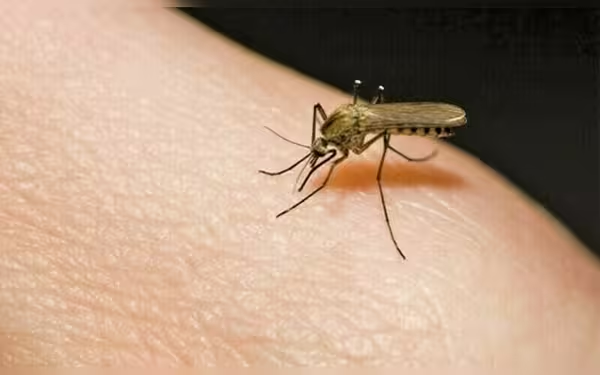Sunday, November 17, 2024 01:53 AM
Surge In Vector-Borne Diseases In Sindh As Malaria Cases Soar
- Over 17,000 new malaria cases reported in two weeks.
- Experts warn actual infections may be much higher.
- Lack of fumigation efforts exacerbates health crisis.
 Image Credits: dawn
Image Credits: dawnSindh faces a surge in vector-borne diseases, with over 17,000 malaria cases reported in two weeks, raising serious health concerns.
KARACHI: The province of Sindh is currently grappling with a significant surge in vector-borne diseases, particularly malaria, as the region reports over 17,000 new cases within just two weeks. This alarming trend has raised concerns among health experts, who believe that the actual number of infections is likely much higher than what is officially documented. The Vector Borne Disease Directorate General Health Services has revealed that from January to the first week of November, a staggering total of 267,389 cases of mosquito-borne illnesses were reported across Sindh. Among these, malaria accounted for the majority with 265,021 cases, followed by dengue with 2,179 cases and one reported death, and chikungunya with 189 cases.
The breakdown of malaria cases by region indicates that Hyderabad is the most affected area, with 126,584 cases, followed by Larkana with 59,752 cases, and Mirpurkhas with 35,248 cases. Other regions such as Shaheed Benazirabad, Sukkur, and Karachi have also reported significant numbers of infections. In total, 6,015,702 patients have been screened for malaria in the province, highlighting the scale of the health crisis.
Experts, including Dr. Abdul Ghafoor Shoro from the Pakistan Medical Association, have expressed grave concerns regarding the current situation. He stated, “These stats represent only the tip of the iceberg. The actual number of cases must be higher than what is being officially shared, given the big gaps in our surveillance system and our limited capacity for diagnosis.” Dr. Shoro attributed the rise in vector-borne diseases to the lack of fumigation efforts and criticized the government for prioritizing tertiary care hospitals over preventive healthcare measures.
According to sources, approximately 80 percent of patients visiting general physicians are presenting with symptoms such as high fever and acute joint pains. Many of these patients are diagnosed with chikungunya, although doctors often lack scientific evidence to confirm this. A senior general physician explained that even when chikungunya is confirmed through lab tests, the treatment plan remains largely the same, focusing on alleviating symptoms rather than targeting the virus itself.
Testing for chikungunya has become more accessible in recent months, with several laboratories now offering these tests. However, the costs associated with testing can be prohibitive, and the reliability of the tests remains a concern. One hospital has begun offering a package that includes tests for dengue, malaria, and chikungunya for Rs7,600, reflecting the growing demand for accurate diagnoses.
In cases of chikungunya, while fever may subside, joint pains can linger for months. Doctors often recommend supplements and daily exercise to manage these symptoms, but they caution against the frequent use of painkillers due to potential kidney damage. The need for local studies to assess viral mutations and develop effective treatment plans has never been more urgent.
The ongoing rise in vector-borne diseases in Sindh serves as a stark reminder of the importance of preventive healthcare measures. As the government continues to focus on tertiary care facilities, it is crucial to address the underlying issues that contribute to the spread of these diseases, such as inadequate access to clean drinking water and a lack of comprehensive healthcare strategies. Only through a concerted effort to prioritize preventive measures can we hope to mitigate the impact of these diseases and protect the health of the population.













